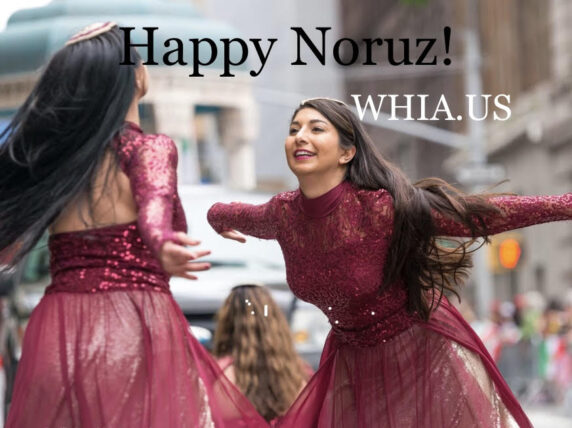
WHIA to Celebrate Noruz Spring Day with the Kurdish People
Noruz (Persian: نوروز, pronounced [nowˈɾuːz]; lit. ’new day’) is the Persian-language term for the day of the Iranian New Year, also known as the Persian New Year.
It begins on the spring equinox and marks the beginning of Farvardin, the first month of the Solar Hijri calendar (an Iranian calendar used officially in Iran and Afghanistan).
The day is celebrated worldwide by various ethnolinguistic groups and falls on or around the date of 21 March on the Gregorian calendar.
The day of Noruz has its origins in the Iranian religion of Zoroastrianism and is thus rooted in the traditions of the Iranian peoples; however, it has been celebrated by diverse communities for over 3,000 years in Western Asia, Central Asia, the Caucasus, the Black Sea Basin, the Balkans, and South Asia.
Presently, while it is largely a secular holiday for most celebrants and enjoyed by people of several different faiths and backgrounds, Nowruz remains a holy day for Zoroastrians, Baháʼís, and some Muslim communities.
As the spring equinox, Noruz marks the beginning of spring in the Northern Hemisphere The moment at which the Sun crosses the celestial equator and equalizes night and day is calculated exactly every year, and families traditionally gather together to observe the rituals.
While Noruz has been celebrated since the reform of the Iranian calendar in the 11th century CE to mark the new year, the United Nations officially recognized the “International Day of Nowruz” with the adoption of Resolution 64/253 by the United Nations General Assembly in February 2010.
